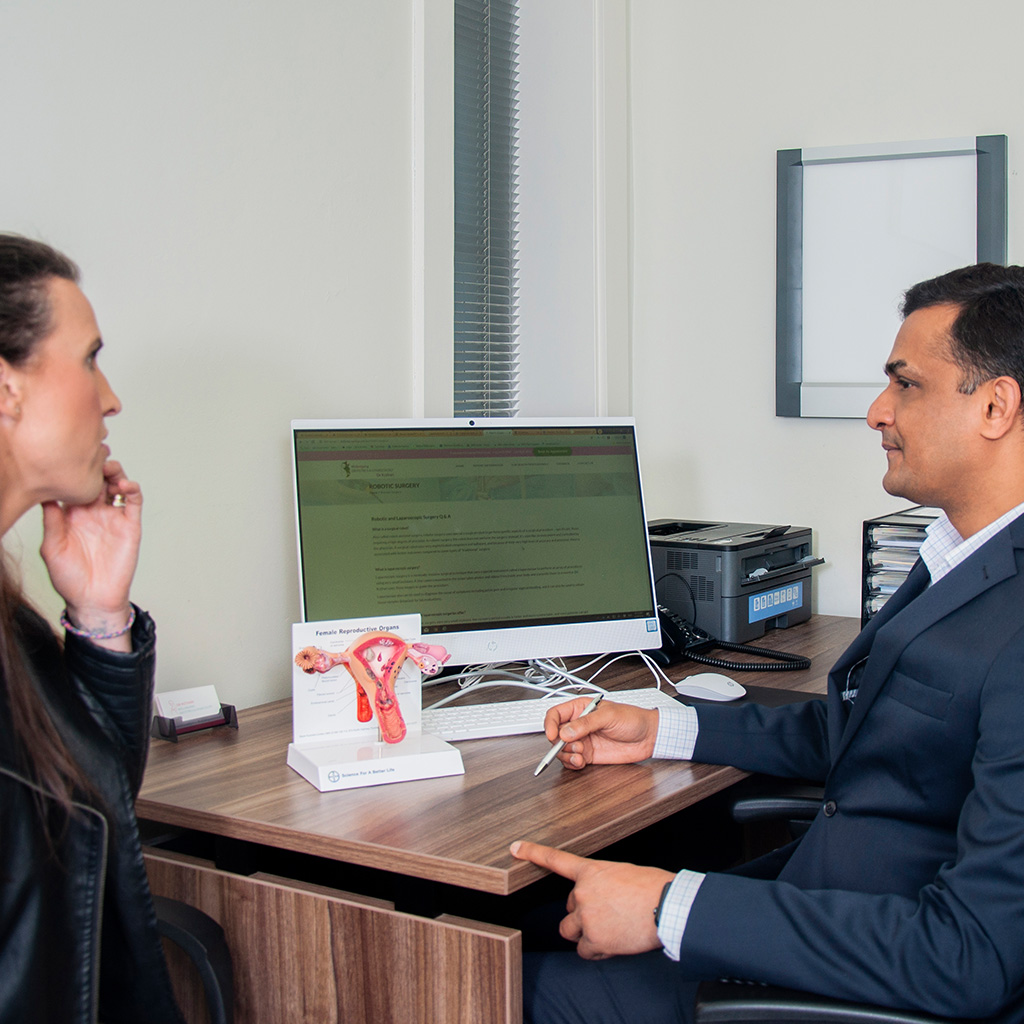Laparoscopic Surgery
What is laparoscopic surgery?
Laparoscopic surgery is a minimally invasive surgical technique that uses a special instrument called a laparoscope to perform an array of procedures with very small incisions. A tiny camera mounted to the scope takes photos and videos from inside your body and transmits them to a monitor. Dr Kothari uses those images to guide the procedure.
Dr Kothari also makes two or more other incisions that slim tools can fit through. These tools include clamps, scissors, and stitching devices, which Dr Kothari can control from outside the body.
This type of surgery can be used for a number of different procedures, but is commonly used to remove the ovaries or the uterus.
Laparoscopy can also be used to diagnose the cause of symptoms such as pelvic pain and irregular vaginal bleeding as well as obtain tissue samples (biopsies) for lab evaluations.
It offers a much faster recovery time and less discomfort compared to traditional surgery.

What are the other types of minimally invasive gynaecological surgeries?
Hysteroscopic surgery is another type of minimally invasive surgery where a hysteroscope is inserted in the uterus and vagina. This type of surgery can be used to remove abnormal growths in the uterus, or to do a number of different procedures on the uterus and vagina.

How is minimally invasive surgery different from regular surgery?
Minimally invasive surgery is a type of surgery that uses special tools that are designed to decrease the size of incisions and reduce tissue damage.
Will Dr Kothari use laparoscopic surgery for my treatment?
Dr Kothari has been performing laparoscopic surgeries since 2004 and is highly trained in performing laparoscopic surgery for gynaecological issues. He will determine whether or not a patient can have this type of surgery based on a number of factors, including
- Why the patient needs surgery. (As an example, patients who need surgery to remove very large cancers cannot always have minimally invasive procedures.)
- What other health problems the patient might have
Whilst undergoing minimally invasive surgery, there’s no guarantee that the surgery will stay that way. It is possible that Dr Kothari may need to switch from a minimally invasive surgery to open surgery, due to surgical complications.
If you are booked in for minimally invasive surgery, it is important to be aware that this could change whilst being operated on. This is for your own safety and could happen in circumstances such as
- Dr Kothari found something unexpected as he started operating
- Dr Kothari couldn’t see well enough or properly treat the organ he was operating on
- Bleeding occurred that could not be controlled with a minimally invasive approach
